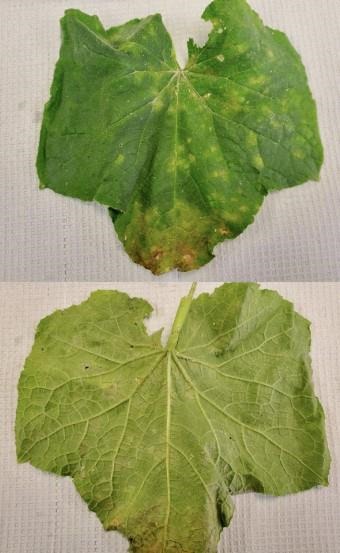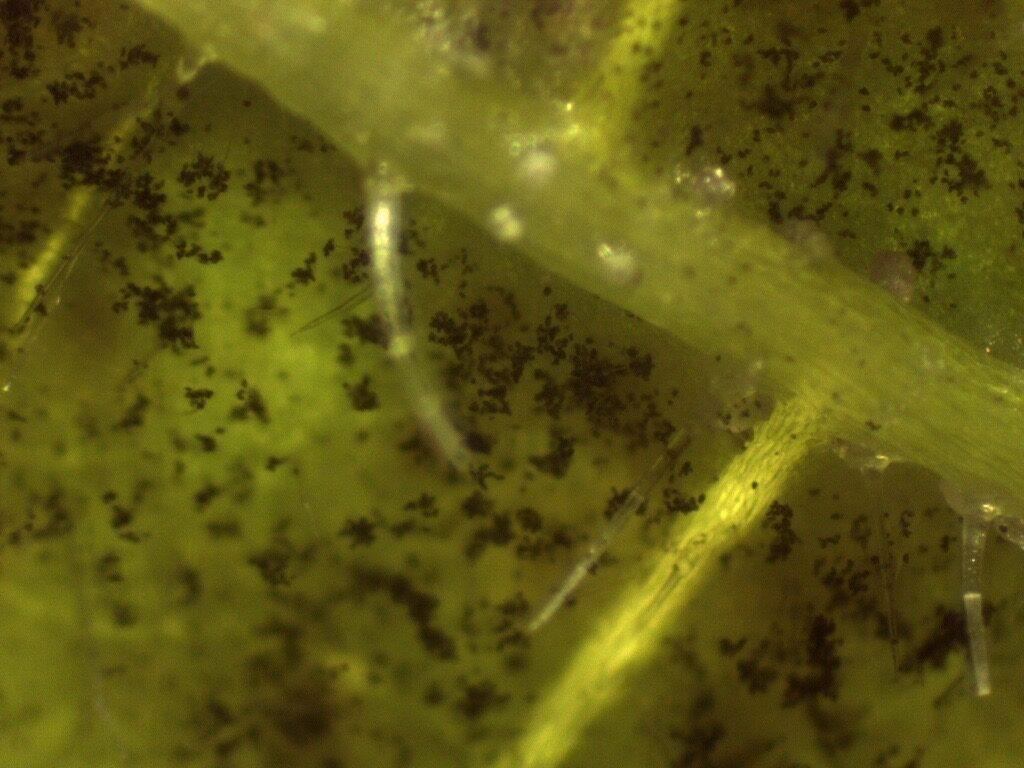By Lina Quesada-Ocampo
Pseudoperonospora cubensis, the causal agent of cucurbit downy mildew (CDM), was confirmed on cucumbers in Lenoir county on June 15. The sample was part of the CDM sentinel plots yearly deployed by the NC State Vegetable Pathology Lab. The sentinel plot showed 15% disease incidence and leaves showed 3% disease severity.
Chlorotic lesions, angular in shape, were observed on the upper surface of leaves along with gray sporulation on the underside, which are typical symptoms and signs of CDM (Figure 1).

Figure 1: Angular, yellow lesions on topside of the leaves that are bound by leaf veins. Dark spores on underside of the leaf (Dr. Savithri Purayannur, NC State Vegetable Pathology Lab).
Sporangiophore structures distinctive of the causal agent (Pseudoperonospora cubensis), were confirmed on the underside of the leaf using a hand lens (Figure 2).

Figure 2: Pseudoperonospora cubensis sporangia under a dissecting microscope (Dr. Savithri Purayannur, NC State Vegetable Pathology Lab)
Pseudoperonospora cubensis has two types of isolates or clades, each of which has a preference for infecting particular cucurbit crops. In North Carolina, clade 2 isolates preferentially infect cucumbers and cantaloupes. On the other hand, clade 1 isolates have a preference to infect squash, pumpkin, and watermelon. Therefore, cucumber and cantaloupe crops are currently most at risk now of CDM since clade 2 isolates have arrived in North Carolina through air currents. Cucumber and cantaloupe growers are encouraged to take immediate action to protect their crops with effective fungicides in North Carolina.
Because this pathogen has the potential of becoming resistant to fungicides rapidly, it is critical to have a strong spray program. Such a program should ideally alternate effective modes of action and tank mixes with protective chemistries to decrease the build-up of fungicide-resistant isolates. Our annual fungicide efficacy trials in North Carolina showed differences on fungicide effectiveness between clade 1 and clade 2 P. cubensis isolates, thus, please refer to our cucurbit downy mildew fact sheet for effective chemistries for each isolate type depending on your cucurbit crop.
Source : ncsu.edu